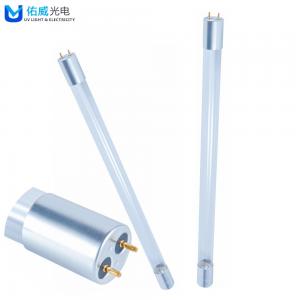strilizing living environment kill in visible bacteria UV light T8
We live in an environment where bacteria are everywhere. There are bacteria and viruses that are invisible to our naked eyes in the air, on objects, on mobile phones, on clothes, on towels.
In fact, it is still necessary to disinfect and sterilize with ultraviolet lamps on a regular basis.
First of all, household disinfection itself is something that needs to be done regularly. Regular disinfection can ensure the health of the living environment of family members.
Secondly, compared with spraying and wiping with alcohol or disinfectant, ultraviolet sterilization is more convenient, the disinfection effect is not inferior to the traditional disinfection method, and it is colorless, odorless, and chemical-free.
The principle of ultraviolet sterilization and disinfection is to use the central ultraviolet radiation band with a wavelength of 253.7nm (the ultraviolet radiation in this band has a strong bactericidal ability) to act on the DNA of microorganisms, destroy the DNA structure, and make it lose the function of reproduction and self-replication to achieve sterilization and disinfection. It can be used for disinfection and sterilization of air, object surfaces, etc." Garranty time: 12 months Garranty policy: any bad uvc lamp, sent a new one for replacement. "How to use:
According to the regulations of the third edition of the ""Disinfection Technical Specifications"" issued by the Ministry of Health, Volume 2 (Disinfection Specifications), the installation quantity of indoor suspended ultraviolet disinfection lamps is not less than 1.5W per cubic meter on average, and requires uniform distribution and hoisting height distance. The ground is 1.8 ~ 2.2m, so that the human breathing zone is in the effective irradiation range. Continuous irradiation is not less than 30min, the radiation intensity of ultraviolet rays is inversely proportional to the radiation distance, and the suspension is too high, which will affect the sterilization effect. If the surface of the object is sterilized, the distance between the lamp tube and the irradiated surface should be 1m, and the sterilization is effective. The thickness of the water layer used for drinking water disinfection is less than 2 cm. During disinfection, the ambient temperature is controlled at 20°C to 40°C and the humidity is 40% to 60%. Too high or too low temperature will affect the disinfection effect, and the disinfection time can be appropriately extended. Relative humidity When it is greater than 80%, the irradiation time is also appropriately extended."







